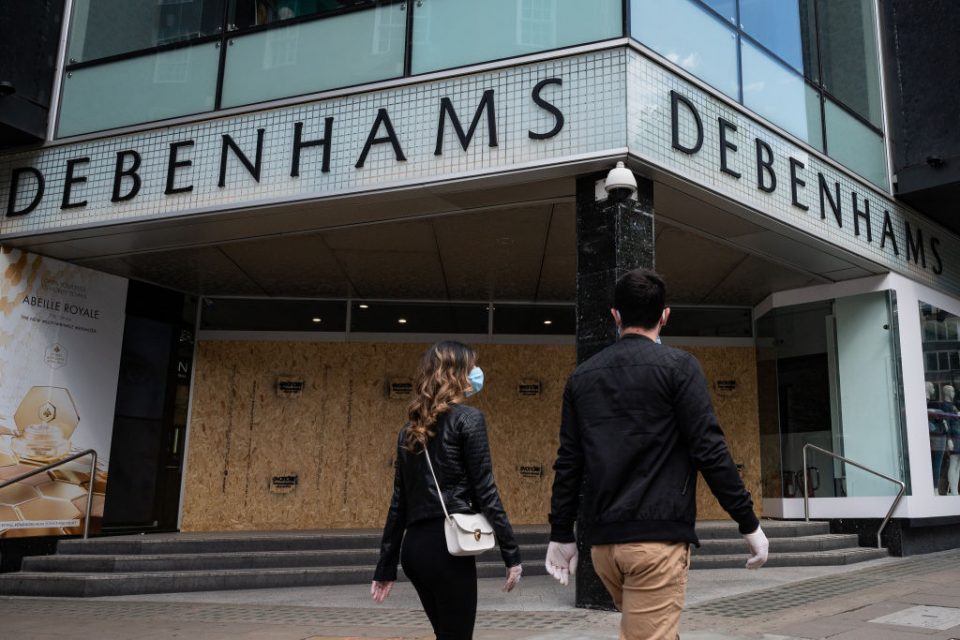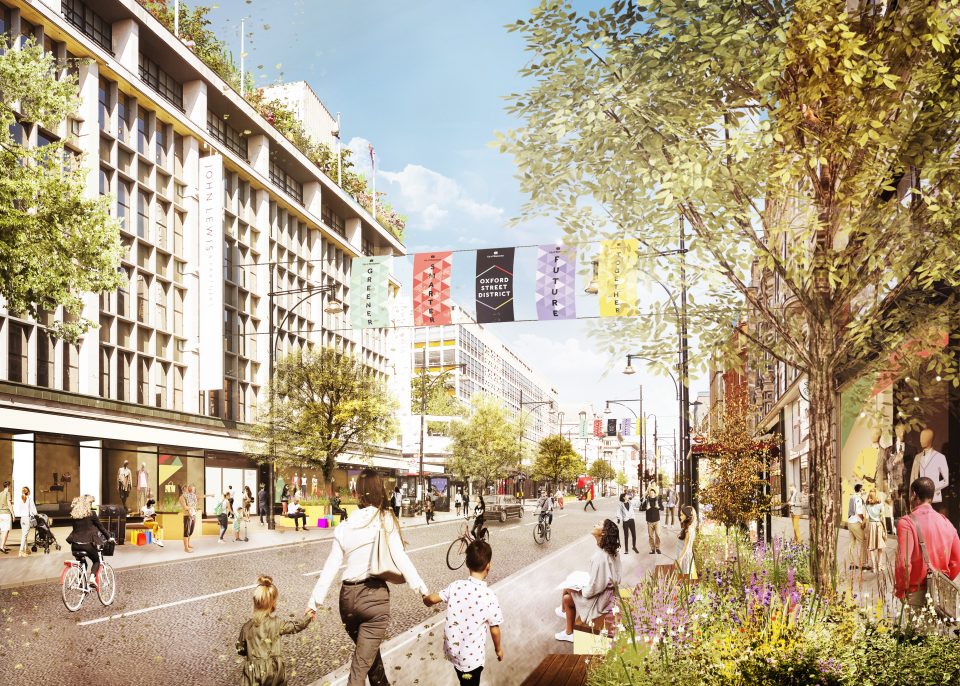Oxford Street: This is what the UK’s shopping destination could look like after lockdown

Oxford Street – the world famous shopping destination that attracts millions of Londoners and tourists every year – is set to look drastically different when the city emerges from the latest coronavirus lockdown.
An arts centre, 25 metre artificial hill and play areas in bus lanes are among the ideas that have been floated to fill unwanted retail space and tempt visitors back to the capital’s high street.
Swapping shops for galleries?

Debenhams’ seven-story department store will be left vacant after the retailer entered liquidation last year. Westminster Labour have put forward plans to transform the store – which has 400,000 sq ft of retail space – into an arts centre.
Proposals published by the local councillors suggested the former high street store could house artist studios, a public library, galleries, events space and a roof garden, to attract visitors to Oxford Street for reasons other than shopping.
However plans are yet to be put forward for the former Topshop flagship store, which once attracted hoards of fashion forward teenagers.
It will now stand empty after its parent company Arcadia collapsed under the pressure of the pandemic.
Offices above stores
While they will survive the pandemic’s impact on trading, many household name retailers are planning to shrink their retail footprint in recognition of the accelerated shift to online shopping.
Earlier this week, Marks & Spencer said it is consulting on plans to redevelop its Marble Arch store to reduce the amount of floorspace given over to retail, with office space set to take over its top floors.
John Lewis, which this morning revealed it will not reopen some stores after lockdown as its losses mounted to £517m, has previously said it will replace some retail space in its Oxford Street flagship department store with offices.
Jace Tyrrell, chief executive of New West End Company, which represents 600 businesses in the area, said the M&S redevelopment is an “excellent example of the forward-thinking and innovative strategies that are shaping the future of the Oxford Street district”.
“Responding to changing customer demands, the investment highlights the confidence of brands and business in a strong future for the nation’s high street as it evolves to bounce back strongly”, he said.
Trees, seats and bus stop “pocket parks”

Westminster Council, meanwhile, has begun work to improve facilities in the shopping district, with an increase in seating areas, plants and trees.
It is also planning to consolidate bus bays to make space for “pocket parks” with play areas and lighting installations in an attempt to lure back visitors and help businesses bounce back.
Rachael Robathan, leader of Westminster Council, said it is “critical that we act urgently to restore confidence in the nation’s favourite shopping district”.
“The pandemic has been a hammer blow for retailers and Oxford Street has suffered as much or more than any other high street in the country,” she said.
Robathan added: “These initial measures, which should be completed in time for summer, will literally pave the way for an economic recovery. They will create a new visitor-friendly environment and reinforce the area as one of the best places in the world to live, work, shop and visit.”
Bringing Hyde Park to Marble Arch
The council has also cooked up a proposal for a new “Marble Arch Hill”, which would be a 25 metre temporary visitor transaction to encourage visitors to the area.
It could support millions of pounds in incremental spending across the local economy, councillors said.
We hope it will give people an opportunity to look afresh and with wonder at this well known, but sadly increasingly overlooked, area to recognise its beauty and importance,” Robathan said.
“We want visitors to appreciate the wider context of this iconic location and its close connections to Oxford Street and Hyde Park, as well as other key destinations in the West End and beyond.”